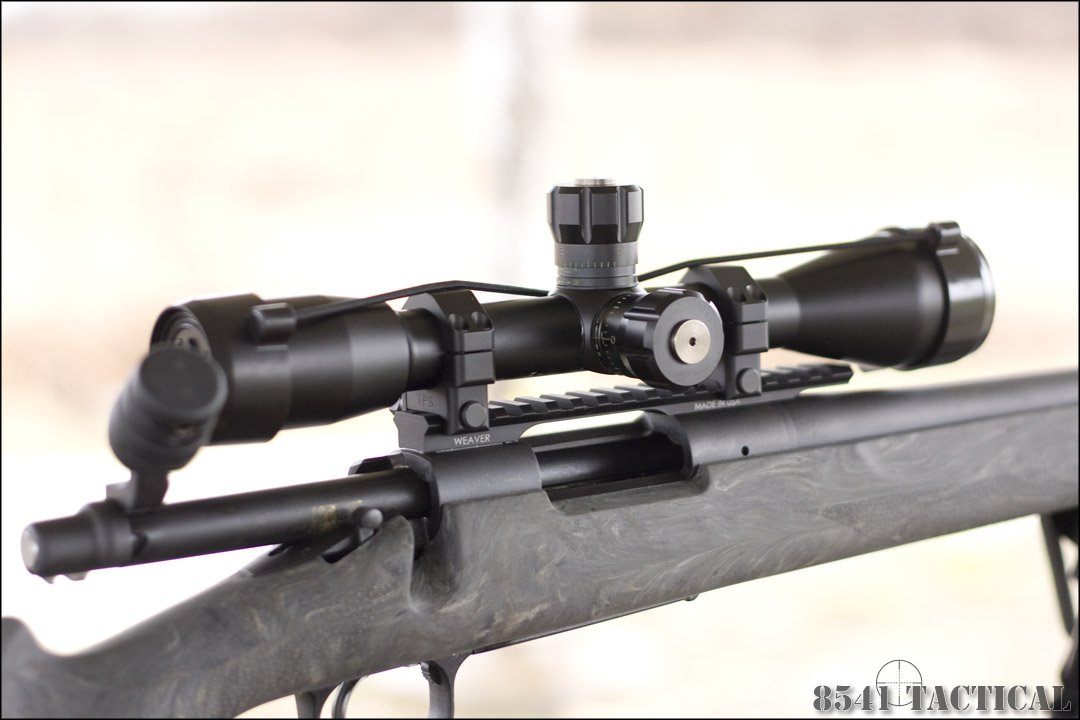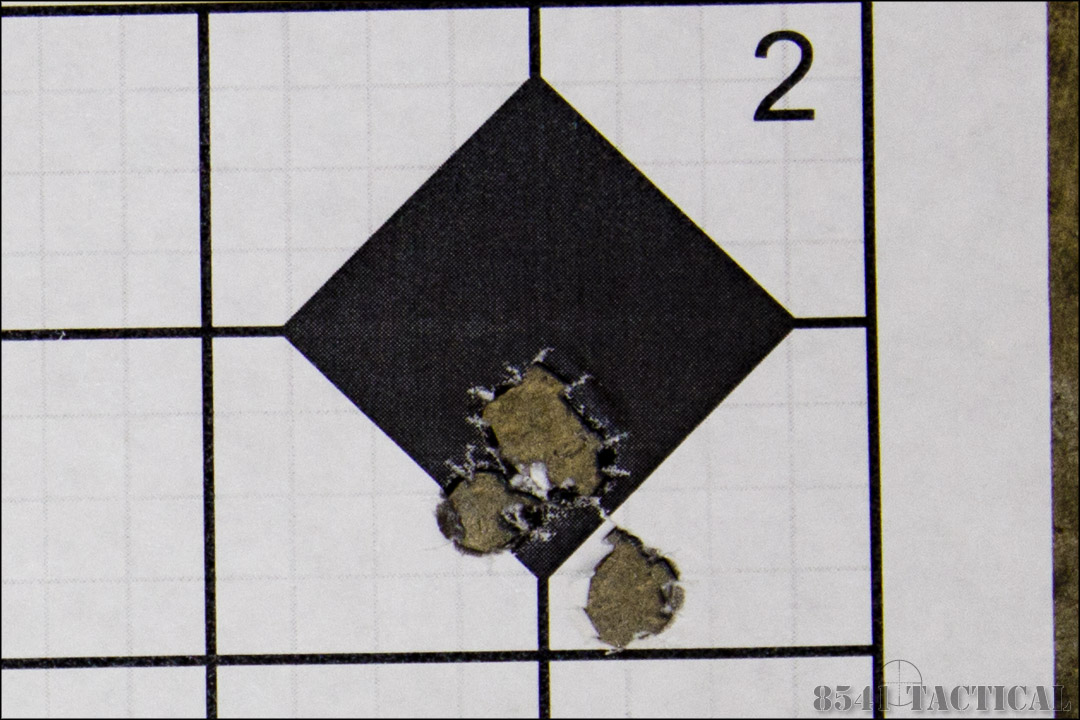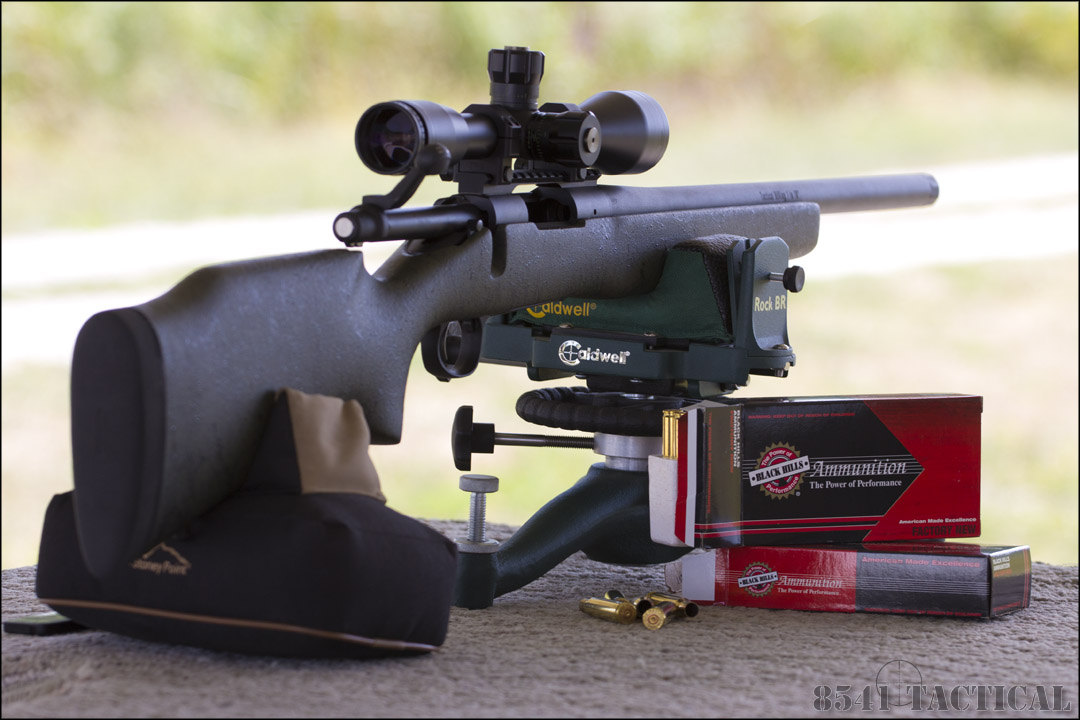
Remington 700 SPS Tactical AAC-SD
.308 Winchester
by John McQuay
12.22.12

Remington 700 SPS Tactical AAC-SD .308 Winchester, Equipped with a Bushnell Tactical 10x scope, Harris BRM-S 6-9" Bipod and KRG Bolt-Lift bolt knob.
It’s hard to go to any rifle range, gun store, competition or class without seeing a Remington 700 on the line. The 700 has been our country’s primary sniper rifle for years and is one of the most popular police sniper rifles in service. In mid 2010 Remington teamed up with Advanced Armament Corp. to make some changes to the tried and true Model 700.
The designation of the new Model 700 makes this collaboration clear. The rather long name is the “Model 700 SPS Tactical AAC-SD”. Model 700 is self explanatory. The lineage is pretty clear when you look at the rifle. SPS indicates that the rifle is a hinged floor plate and plastic stock. Remington “Tactical” models come with a 20” barrel as opposed to the 24” or 26” on most 700’s. AAC notes the involvement Advanced Armament Corporation had in the development of the rifle. “SD” is a nod to the fact that the rifle is intended to host a sound suppressor or “Schalldämpfer” in German. SD is a designation that was used on the suppressed version of the famous MP-5 sub machinegun. The 700 SPS AAC-SD is only available chambered in .308 Winchester.
The two features that really set the 700 AAC-SD apart from the others is the 1:10 twist barrel and threaded muzzle. The faster twist barrel is more suited to the long/heavy bullets used in precision rifle shooting. The muzzle is threaded 5/8”-24 tpi. This is a US industry standard for .30 caliber muzzle brakes, flash suppressors and silencers. This brings us back to the first feature. The 1:10 twist barrel is better suited for stabilizing sub-sonic .308 ammunition.
| The receiver of the 700 AAC-SD is a standard Remington short action, like you would find on any of the other .308 models. The steel parts are covered in a matte blue finish. This gives a nice flat black color. The receiver and barrel are set into a Hogue Overmolded stock. The exterior of the stock is a tacky rubber that enhances grip. The color is advertised as "Ghillie Green". However it's really more of a swirly grey. It is equipped with aluminum pillars to give the action screws something solid to pull against. The buttstock has a nice cushy recoil pad and a single sling stud. The forend is equipped with one sling stud. Either a bipod or sling may be attached. I would have liked to see two forward studs as found on the other heavy barreled SPS models. As it comes out of the box the barrel is free floating in the stock, but more about that later. |
 |
The trigger guard is a cast aluminum hinged version allowing for quick unloading. The trigger is the Remington X-Mark Pro Adjustable. It came set at approximately 4lbs from the factory and can be adjusted by the set screw in the upper portion of the trigger bow. The break is extremely clean and crisp with very little overt ravel. The safety is located on the right side of the bolt shroud as it is on all right handed 700's.
We decided to use the 700 AAC-SD as the base for our Budget Precision Project rifle. So we mounted a Weaver Tactical Picatinny Rail and attached a Bushnell Elite Tactical 10x in TPS TSR Rings. At the range the initial results were less than stellar.
This is what we found during our Budget Precision Series:
When determining how we were going to proceed with this series, I knew the key point was going to be accuracy. We needed to demonstrate how each step affected the accuracy of the system. I knew that a baseline accuracy test was going to be needed. We needed it to not only show accuracy improvements, but to show the new shooter what he could expect from the rifle he just bought.
I also knew that this is the part of the initial evaluation that was going piss people off. I have seen the groups posted in the online forums. They look almost too good to be true. Many of them look like the group to the right. That is five shots at 100 yards on a 1.5" diamond. It ends up being a .59 MOA group. If you toss out the "flyer" then you end up with a 1/4 MOA group.
Now many owners will see this and tell everyone that they pulled the "flyer" and that the rifle will shoot 1/4 MOA all day long, IF they do their part.
The reality of the situation is that shot is NOT a flyer. It was executed with the same attention to the fundamentals as the other four shots. So why should be throw it out? The answer is we should not. It is as valid as the shots that are in the neat little hole. Four shots or even five shots are not representative of the accuracy of a system. |
 |
 |
When we are testing the accuracy of a rifle I prefer to use five consecutive five shot groups. Each shot is taken on it's own with a rest in between. This minimizes shooter fatigue, but still allows for a representative group. No shots are called as "flyers" unless the error was called when the shot was fired. We don't get to go downrange and kick out the shots that hurt our groups. If the shot is a flyer, that group is pretty much useless for our purposes and another group needs to be fired.
Now when we back up and look at the target on the left, we see our "cherry picked" group from above (#2) in context with the rest of the groups. They vary from 0.6 to 1.4 MOA. When we average the size of all the groups, we can say this is an average "MOA" rifle. However, you can't say that it will shoot MOA "all day, when I do my part" because it just isn't true. |
Very rarely will you see shooters actually run a test like this on a factory rifle. It really doesn't look very good and when it's put up against the scores of selected 3-shot groups it looks downright ugly. I am sure that the reason you don't see more of these is that the owners feel that it would make them look like a bad shot because other guys are getting "quarter moa groups".
We need to stop lying to ourselves and make a realistic assessment of the equipment we are using without any emotional attachment. Rifles aren't children. They don't need our encouragement and adoration to succeed. Judging them objectively will serve us all well.
Now our question is, why is the AAC-SD producing these relatively large groups? They are frankly, unacceptable for a precision rifle.
The accuracy, or lack thereof, can be blamed directly on the Hogue stock. When holding the rifle the Hogue appears to be free-floating. It does not appear to touch the barrel of the rifle at any point. However when you set the rifle in a bipod, the stock makes intermittent contact. This can alter the harmonics of the barrel and cause shot groups to open up.
- Budget Precision Build Index - |
 |
Specifications:
- 39 5/8" Overall
- 20" Varmint Contour Barrel
- Muzzle Threaded 5/8-24tpi
- 1 in 10 twist
- 7.3 Lbs
- Matte Blue Finish
- Hogue Over Molded Stock
- 4 Round Magazine Capacity
- X-Mark Pro Adjustable Trigger
- MSRP: $780.00 (Street Price: $673.00)
|
We pulled the action from the stock and used some "shims" from cut up soda cans. Placing these shims between the recoil lug and front action screw allowed the barrel to ride higher in the channel. We could then properly load the bipod on the rifle without the forend flexing against the barrel. This resulted in a drastic improvement to the accuracy. We ended up with an honest "minute of angle" rifle. Other shooters have had varying success with grinding away the barrel channel or glass bedding the stock.
The 1:10 twist barrel will stabilize most match bullets suitable to the .308 cartridge. The threaded muzzle not only allows for easy installation of a sound suppressor, but also brakes or other muzzle devices. This is a very nice feature when you take into account that having a plain muzzle precision threaded can cost $70-100 dollars in many cases.
Overall the Remington 700 SPS Tactical AAC-SD is a great value and a good starting point for those interested in getting into the precision rifle game. With a bipod and compact scope it makes a very handy field rifle. With a simple stock replacement it turns this rifle into a great entry match rifle.
The bolt knob seen on our test rifle is a KRG Ops "Bolt Lift" It does not come as part of the 700 SPS Tactical AAC-SD package, but it can be quickly ordered and easily installed.
We did a review of the Kinetic Research Group "Bolt Lift" (here). |
 |
|

Our 700 AAC-SD with a Bell & Carlson M40 Style Stock
|
|
|

